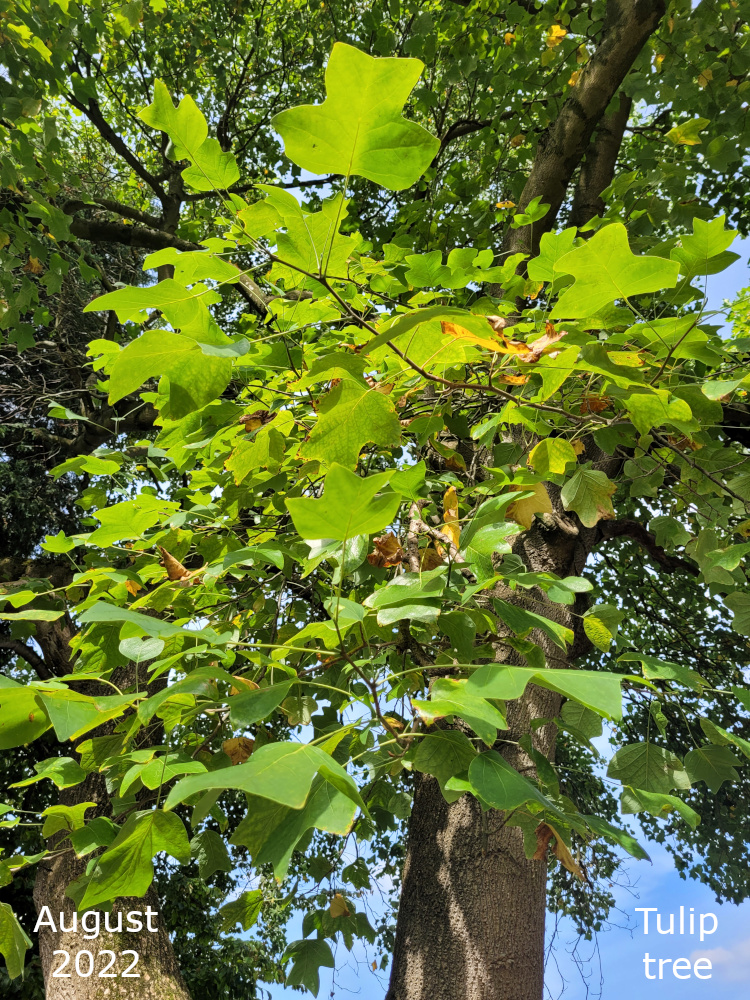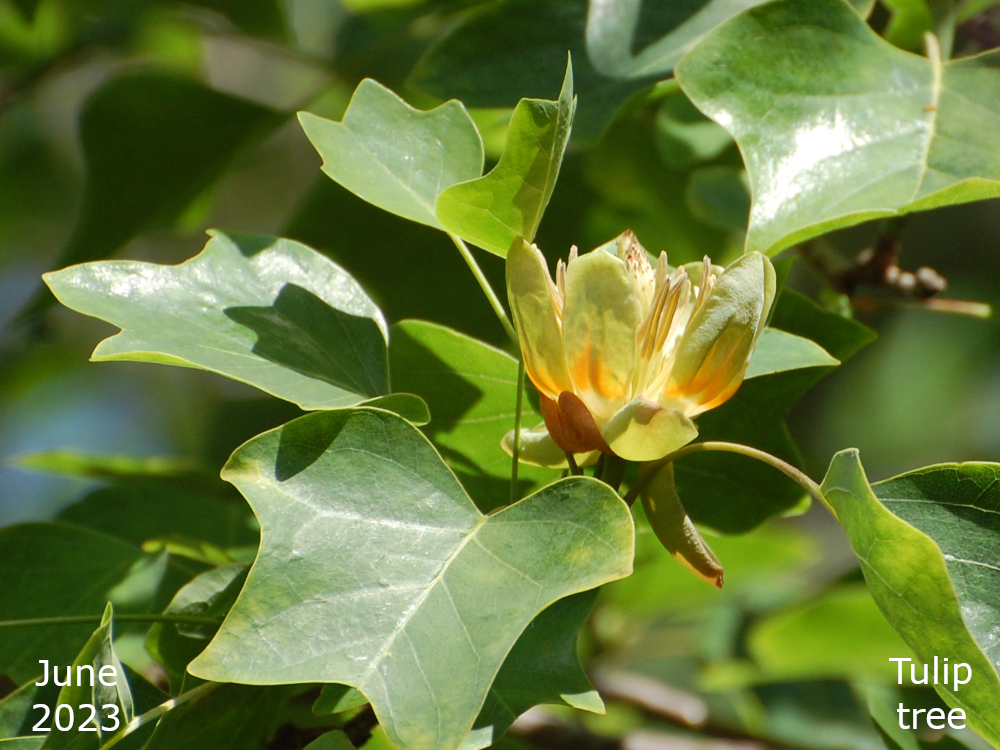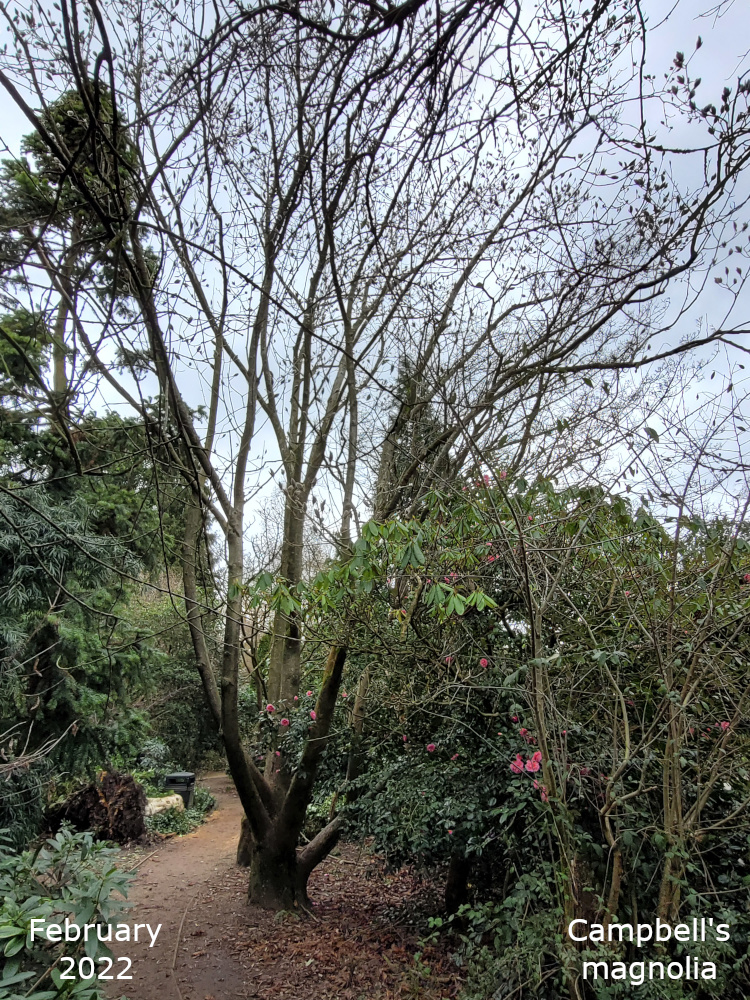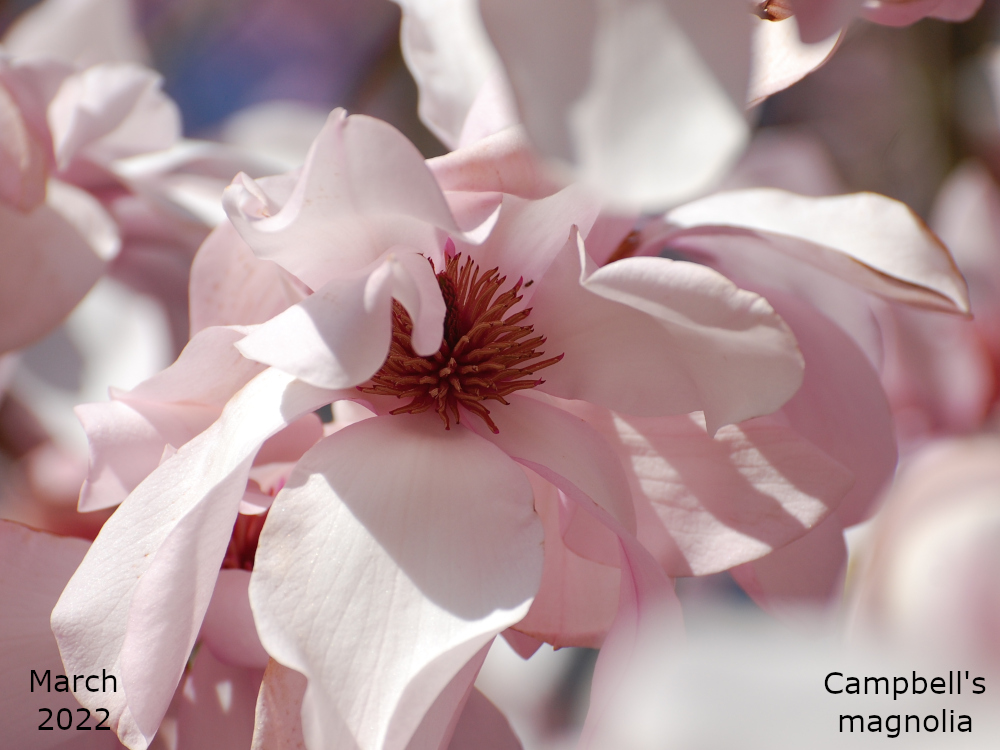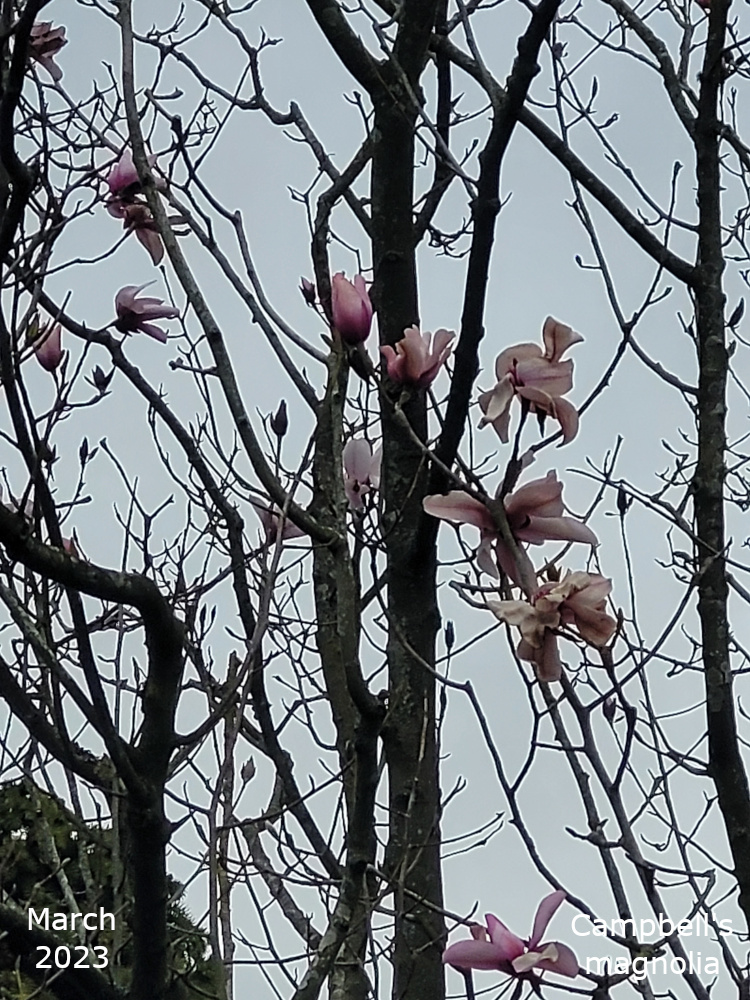Tulip tree
The tulip tree is included here as it is a member of the Magnoliaceae family. There are two types of Tulip tree, this one is Liriodendron tulipifera and is the North American variety. It grows in areas from Southern Ontario, in Canada, down the East of the USA down to Florida. In Florida it flowers as early as April but in more Northerly parts it flowers in June. The tree in the park, opposite the bowling green, flowers from early June and finishes by early July. The flowers are not that easy to see at first as they are rather greenish when first emerging but eventually brighten up to a pale yellow with orange banding. The central spike of flattened stigmas is difficult to see as each flower points upwards and they are all rather high up. After the flowers are finished and the petals fall, the spikes remain. They are still pale yellow/green at first but they turn light brown when they dry as they develop into wind-borne samaras – winged seeds, a bit like those of a Sycamore tree.
Campbell’s magnolia
The Campbell’s magnolia is in front of the white house and is a a particularly magnificent variety of magnolia. It puts on a wonderful display of pink flowers in early March. There were a whole host of flowers in 2022 but then there was a drought in the summer months and many trees felt the stress, including the Campbell’s magnolia. In March 2023 there were not as many flowers.
Magnolia campbellii was named by Sir Joseph Dalton Hooker, after Dr. Archibald Campbell who was a Superintendent of Darjeeling sanatorium. Hooker was a 19th century botanist and director of the Royal botanical gardens at Kew. Campbell’s magnolia is a native of the Himalayan region.


